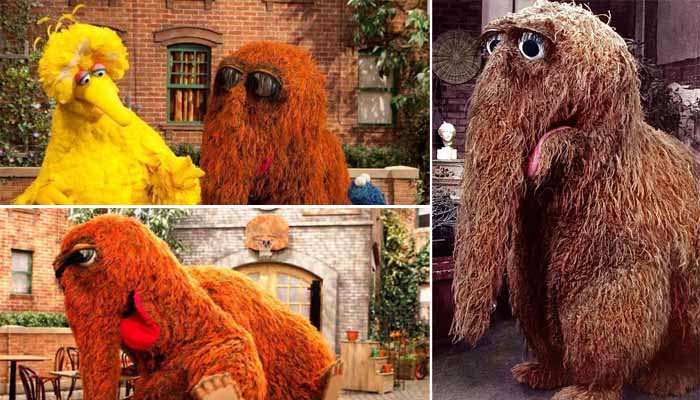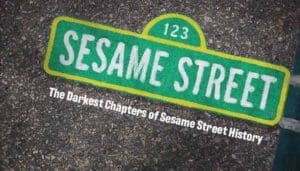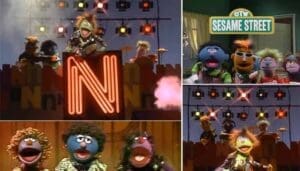Houston, We Have a Snuffleupagus Problem (Or Do We?)
Ah, Mr. Snuffleupagus. Just hearing the name conjures images of a giant, furry, vaguely elephantine creature with soulful eyes and a tendency to vanish like a dream upon waking. For generations who grew up on Sesame Street, Snuffy was Big Bird’s best pal, confidante, and, for the longest time, his seemingly imaginary friend. This begs the question whispered in nostalgic corners of the internet: Whatever happened to Snuffy? Did he get lost exploring his cave? Did the Sesame Street HR department finally decide an “imaginary” employee was just too hard to manage? Was he… cancelled?
Let’s set the record straight. Mr. Aloysius Snuffleupagus, often simply “Snuffy,” made his grand, shuffling entrance onto Sesame Street during its third season back in 1971. Described initially as a “large and friendly monster resembling an anteater,” he quickly became indispensable to Big Bird, even helping water his garden with his impressive snuffle-trunk on day one. Their friendship was immediate and deep.
However, there was a catch, a big, furry, often-just-out-of-frame catch. For years, only Big Bird (and, crucially, the millions of children watching at home) could actually see Snuffy. Whenever another adult character like Gordon, Maria, or Luis came around, Snuffy would inevitably wander off, miss them by seconds, or be obscured by some comical circumstance. This wasn’t some accidental running gag; it was baked into the character’s concept from the start, a deliberate choice by the show’s creators, including Jim Henson himself. The ambiguity – was he real or wasn’t he? – was meant to mirror the common childhood phenomenon of imaginary friends. It created a unique dynamic: the young audience shared a secret with Big Bird, they knew Snuffy was real even if the grown-ups on screen remained skeptical. This shared knowledge fostered a special connection, making viewers feel complicit in Big Bird’s reality. But did this clever premise eventually lead to Snuffy’s exit? Not quite, but the story took a fascinating turn.
The Art of the Near Miss: Snuffy’s 14-Year Game of Hide-and-Seek
For an astonishing 14 years, Sesame Street played out this elaborate game of Snuffleupagus hide-and-seek. The formula became a classic: Big Bird would have an amazing encounter with Snuffy, rush off to grab the nearest adult, proclaiming “You’ve got to meet Snuffy! He’s right here!”, only to return to an empty space and a gently swaying fern. Snuffy, perhaps startled by the approaching footsteps or simply possessing impeccable timing for missing cues, would have just left.
The humor mined from this situation was considerable, as the writers intended. It relied on what head writer Norman Stiles called “terrible coincidences and quirks of Snuffy’s own personality”. Imagine the mounting frustration for Big Bird, constantly trying to prove his friend’s existence, only to be met with gentle disbelief or outright exasperation from the adults. “Yeah, sure, OK, Big Bird,” became the standard, slightly patronizing response. Over time, some adults even grew weary, suspecting Big Bird might be using Snuffy as a scapegoat. Anytime the big yellow bird mentioned his pal, the grown-ups might subtly (or not so subtly) encourage him to drop it.
The sheer longevity of this gag – nearly a decade and a half – elevated it beyond a simple plot device. It became an almost surreal cornerstone of the show’s universe. Fourteen years is a long time to maintain that level of playful deception. While humorous on the surface, this constant invalidation of Big Bird’s reality subtly underscored a potential isolation for the character. His most important friendship was consistently dismissed by the community around him, setting the stage for a resolution that would be about more than just proving Snuffy existed; it would be about validating Big Bird’s own experiences and perceptions.
Behind the Fur: Puppet Pains and Performance Puzzles
Bringing Snuffy to life was no small feat, literally. He’s one of the most physically demanding Muppets ever created. Described as a “massive presence,” the Snuffleupagus puppet requires two performers inside its considerable furry bulk – one in the front controlling the head, trunk, and voice, and one in the rear handling the… well, the rear. Early performer Jerry Nelson (also the voice of Count von Count) originated the role, with Bryant Young in the back end. The sheer physicality and heat inside the costume were significant challenges; takes often had to be paused just so the performers could be fanned off.
Nelson eventually stepped down from the role in 1978, partly due to back problems exacerbated by the heavy costume and commitments to other projects. After a brief stint by Michael Earl Davis, Martin P. Robinson took over Snuffy’s front end and voice in 1981, a role he continues to perform to this day. Interestingly, Robinson reportedly became quite invested in his character’s plight. He was known to be vocal about the fact that Snuffy wasn’t just a figment of Big Bird’s imagination. This performer’s perspective adds a compelling layer – the person embodying Snuffy felt the character deserved to be seen and believed.
One might even speculate whether the sheer logistical complexity of constantly staging near-misses with such a cumbersome puppet played a small, secondary role in the eventual shift in narrative. Operating Snuffy required specific camera blocking and endured significant physical strain. While the primary motivation for the change lay elsewhere, the practical challenges of maintaining the hide-and-seek gag for 14 years with such a demanding puppet might have made the creative team more open to a storyline that allowed Snuffy more straightforward interactions.
The Reveal! November 18, 1985 – The Day Snuffy Became Real(ly Seen)
Forget removal – the big Snuffy event was a reveal. On November 18, 1985, in the premiere episode of Sesame Street’s 17th season (Episode 2096), the moment finally arrived. This wasn’t just another day on the street; it was a carefully orchestrated television event, following the release of the feature film Sesame Street Presents: Follow That Bird. After 14 long years of near-misses and adult skepticism, the grown-ups of Sesame Street finally, unequivocally, laid eyes on Mr. Snuffleupagus.
Accounts vary on the exact mechanics – one story involves Big Bird luring the adults with the promise of food , another involves Snuffy bringing a broken toaster to the Fix-It Shop – but the outcome was the same. The adults saw him. All of them. The shock, the surprise, and undoubtedly, the immense vindication for Big Bird must have been palpable.
This moment marked the end of the show’s longest-running gag and resolved a central point of gentle conflict. It wasn’t Snuffy leaving; it was Snuffy arriving fully into the shared reality of Sesame Street. He was finally, officially, seen. And he’s been seen ever since, remaining a beloved character performed by Martin P. Robinson. The reveal was the climax of a 14-year narrative arc, a payoff carefully planned and executed by the show’s producers.
Okay, But Why? The Surprisingly Deep Reason Snuffy Stepped Out of the Shadows
So, why the change? After 14 years of a successful, humorous dynamic, why rewrite the rules of Snuffy’s existence? The answer is surprisingly profound and rooted in real-world concerns about child welfare.
In the early to mid-1980s, societal awareness of child abuse and molestation was growing, partly fueled by prominent media coverage, including a series on 60 Minutes. The producers and writers at Sesame Workshop began to feel uneasy about the core message embedded in the Snuffy storyline. They realized that consistently depicting a beloved child character (Big Bird) being disbelieved by trusted adults about something important and true (Snuffy’s reality) could send an unintended, potentially harmful message to young viewers.
The concern was that children facing real-life situations where they needed to disclose something difficult or dangerous, such as abuse, might hesitate if they believed adults wouldn’t take them seriously. The creative team decided they had a responsibility to change the narrative. They wanted children in the audience to feel empowered, to trust that adults would believe them if they spoke up about something important.
This wasn’t a decision made lightly. Sesame Workshop consulted child development experts to navigate the change thoughtfully. They devised a careful, two-year plan leading up to the reveal. In the first year (Season 16), storylines subtly established that Big Bird understood the difference between fantasy and reality. Then, crucially, a few adult characters began to express tentative belief in Big Bird’s claims about Snuffy, even before seeing him, modeling trust in Big Bird’s perception. This gradual approach prepared the audience and the characters for the eventual reveal, reinforcing the underlying message about the importance of listening to and believing children. Snuffy stepping out of the shadows became a powerful metaphor for validating children’s truths.
So, Snuffy’s Still Snuffling! The Myth is Busted.
Let’s put the rumors to rest: Mr. Snuffleupagus was never fired, cancelled, written off, or otherwise removed from Sesame Street. Instead of an exit, he got an entrance – a grand, public debut into the full view of his entire community after 14 years of being Big Bird’s (and the home viewers’) special secret. He simply traded his mastery of the near-miss for the ability to, you know, actually finish a conversation with Gordon without vanishing mid-sentence.
The reveal in 1985 marked a significant evolution for the character and the show, driven by a deep sense of responsibility towards its young audience. It demonstrated Sesame Street’s unique ability to weave crucial life lessons into its engaging narratives. The fact that Snuffy remained a popular and integral character long after his “imaginary” status was resolved speaks volumes about his inherent appeal. He wasn’t just a gimmick; he was, and is, a beloved friend.
One can only imagine the collective, sheepish shuffle from the adults of Sesame Street after finally meeting the creature they’d dismissed for over a decade. And Big Bird? He must have felt like the most vindicated bird on the block. So, rest assured, Snuffy is still snuffling around Sesame Street – large, furry, endearingly shy, and, since 1985, undeniably real to everyone.




